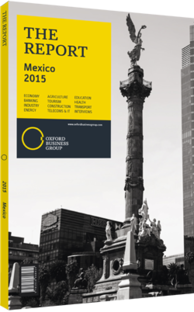Stock market: Despite emerging market downturn, solid prospects in Mexico
Return Of Risk Aversion
During the last four months of 2014 emerging equity markets faced a strong decline. This was mainly due to foreign capital outflows, bolstered by a higher degree of risk aversion amongst investors and driven by the slump in oil prices, geopolitical uncertainty in Ukraine, Greece and the Middle East, and the anticipation of monetary policy normalisation by the US Federal Reserve.
Against this backdrop exchanges in Latin America suffered losses. Mexico was not immune to this volatility, with its benchmark index (Índice de Precios y Cotizaciones, IPC) performing in line with international peers. According to EPFR Global, a provider of fund flow data, institutional investors reported $18.6bn in outflows from emerging markets in fourth-quarter 2014 – $3.7bn from Latin America and $1.2bn from Mexico. We believe these flows were reinvested in developed markets assets, especially US equities and bonds.
Although the negative track record of equity markets influenced the indices’ performance at the beginning of 2015, global monetary policies – especially the bond-buying programme by the European Central Bank – buoyed investor confidence and turned things around. We forecast a neutral performance in the global equity markets in 2015, due to less restrictive economic policies and modest growth. Investors will be cautious when determining the asset allocation of their portfolios, investing in countries with solid macroeconomic fundamentals and picking firms with a solid financial structure, good governance and opportunities.
Back To Fundamentals
We believe that Mexico remains an attractive investment destination because of its strong fundamentals. The structural reforms approved in 2013 are expected to strengthen the country’s growth and are key drivers for a potential upswing in stock prices – appropriate for medium- and long-term investment horizons. Our expectations are based on factors such as demographics; low interest rates; a high level of correlation with the US economy, which has been recovering; robust public finances; and strong from Latin America and $1.2bn from Mexico. We believe economic growth. On the other hand, we also see some risks – namely, a rush in the US to hike interest rates; low oil prices; weaker global growth; and implementation of the structural reforms. However, the strength of the Mexican economy should ultimately support corporate earnings growth, and therefore, share valuations with positive returns for investors.
Since 2013, investors have seen growth potential in the Mexican economy as a consequence of the structural reforms, and have been more confident about investing in Mexican stocks. Indeed, institutional investors increasing their exposure to Mexican stocks raised the valuation parameters of the local equity market. However, implementation of structural reforms will take time, and it may be several years before they have any material effect on corporate earnings. Despite the overvaluation of the IPC, investors have largely held their positions. The index is currently trading at a price-to-earnings ratio of 29 – a 19% premium against its three-year historical mean – while the Standard & Poor’s 500 is trading at 16.9x, a 1% discount.
Forecast
We anticipate the IPC will reach 45,900 points, for a potential return of 6.4% year-on-year, according to weighted expected returns of the index’s constituents. This is based on the assumption that private consumption will improve slowly; US exports will-increase; GDP will grow slightly above 2% in 2015; and the foreign exchange rate will close at $1:MNX15.60.
Although we expect stronger economic growth in 2015, it is likely that different sectors will grow asymmetrically, and we therefore encourage investors to stick to a bottom-up stock picking strategy. We believe the best-performing sectors will be consumer non-cyclicals, specifically auto parts; energy, with an emphasis on firms that might benefit from the energy reform; and infrastructure, focusing on those entities that may take part in National Infrastructure Programme transport projects. Given the expected interest rate hike in the US, we advise avoiding exposure to highly leveraged companies that are sensitive to interest rates.
You have reached the limit of premium articles you can view for free.
Choose from the options below to purchase print or digital editions of our Reports. You can also purchase a website subscription giving you unlimited access to all of our Reports online for 12 months.
If you have already purchased this Report or have a website subscription, please login to continue.

